Mexican Cartel Tactical Note #45: Drones and Explosives Seized in Puebla, Mexico by Fiscalía General de la República (FGR) and Secretaría de la Defensa Nacional (SEDENA)
David A. Kuhn, Robert J. Bunker, and John P. Sullivan
Search and seizure operations were conducted by Mexican federal agencies in San Andrés Cholula, Puebla state on 25-26 April 2020 due to an anonymous tip. These operations resulted in the seizure of a ‘terrorist arsenal’ (arsenal terrorista) of weapons and equipment including the components required to make weaponized drones. This arsenal is thought to be linked to ongoing organized crime bombings in Guanajuato state—with possible Cártel de Santa Rosa de Lima (CSRL) ties—and represents one more data point concerning the growing weaponized drone capabilities of the Mexican cartels and criminal gangs.
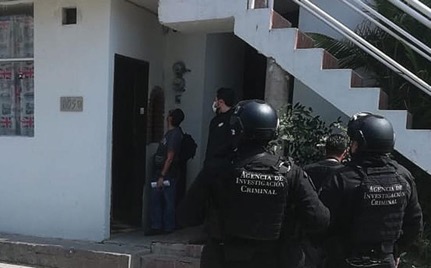
Agencia de Investigación Criminal (AIC) agents of the Fiscalía General de la República (FGR) raid a residence in San Andrés Cholula containing explosives and weaponry. FGR Photo (ESPECIAL) Reposted at: https://www.milenio.com/policia/indaga-fgr-terrorism-hallar-c4-puebla.
Key Information: Rubén Mosso, “FGR asegura explosivos y drones en Puebla; investiga terrorismo.” Milenio. 3 May 2020, https://www.milenio.com/policia/inicia-fgr-pesquisa-delito-finalidad-cometer-terrorismo:
La Fiscalía General de la República (FGR) inició una carpeta de investigación por presuntos delitos de delincuencia organizada con la finalidad de cometer terrorismo, ya que tras diversos cateos en Puebla aseguró la sustancia explosiva conocida como C4, material que posiblemente tiene relación en ataques como el ocurrido en mrzo en Guanajuato un coche bomba explotó en Celaya…
Durante el 25 y 26 de abril, personal ministerial de la FGR, con el apoyo de la Coordinación de Métodos de Investigación de la institución y de la Secretaría de la Defensa Nacional, realizó varios cateos.
En estos se halló sustancia explosiva conocida como C4, dictaminada así por peritos de la Coordinación General de Servicios Periciales de la Fiscalía; pólvora, esferas conocidas como crisantemos, tres drones y dos controles para vehículo volador no tripulado (dron).
Asimismo, un arma de fuego corta y una larga; tres cargadores, 517 cartuchos de diversos calibres y 100 casquillos también de distintos calibres. Se aseguraron además siete teléfonos celulares y 53 tarjetas SIM; tres equipos de radiocomunicación, tarjetas de circuitos integrados, una caja con pirotecnia, así como cableado y distinta documentación, entre otros objetos.
Key Information: Rubén Mosso, “Indaga FGR terrorismo tras hallar C4 en Puebla.” Milenio. 4 May 2020, https://www.milenio.com/policia/inicia-fgr-pesquisa-delito-finalidad-cometer-terrorismo:
…El pasado 22 de abril, la Subprocuraduría Especializada en Investigación de Delincuencia Organizada, inició la indagatoria a raíz de una denuncia anónima en la que se mencionaron diversos hechos que pudieran constituir el delito de delincuencia organizada con la finalidad de cometer terrorismo y realizó el cateo de tres domicilios en el municipio de San Andrés Cholula, Puebla, donde halló el explosivo, armas, cartuchos y equipo de comunicación…
Key Information: “Aseguran en Puebla drones y explosivos para realizar actos terroristas.” Telefono Rojo. 3 May 2020, https://telefonorojo.mx/aseguran-en-puebla-drones-y-explosivos-para-realizar-actos-terroristas/:
CIUDAD DE MÉXICO.— Elementos de la Fiscalía General de la República (FGR) aseguraron drones y explosivos en tres cateos en San Andrés Cholula, Puebla, presumiblemente para realizar actos terroristas.
De acuerdo a un comunicado, desde el pasado 22 de abril, la Fiscalía General de la República (FGR), a través de la Subprocuraduría Especializada en Investigación de Delincuencia Organizada (SEIDO), inició investigaciones con motivo de una denuncia anónima presentada el mismo día, en la que se mencionaron diversos hechos que pudieran constituir el delito de delincuencia organizada con la finalidad de cometer terrorismo.
El 25 de abril del año corriente, a petición del Ministerio Público Federal (MPF), un Juez de Control del Centro Nacional de Justicia Especializado en Control de Técnicas de Investigación, Arraigo e Intervención de Comunicaciones, autorizó la realización del cateo en tres domicilios ubicados en San Andrés Cholula, Puebla…
Key Information: Edmundo Velázquez, “FGR investiga si el Cártel de Santa Rosa de Lima maquilaba artefactos explosivos en San Pedro Cholula.” Periodico Central. 1 May 2020, https://www.periodicocentral.mx/2020/pagina-negra/delincuencia/item/9079-fgr-investiga-si-el-cartel-de-santa-rosa-de-lima-maquilaba-artefactos-explosivos-en-san-pedro-cholula:
La Fiscalía General de la República, a través de la Subprocuraduría Especializada en Investigación de Delincuencia Organizada (SEIDO), investiga la relación del Cártel de Santa Rosa de Lima con la fabricación de supuestos explosivos en San Pedro Cholula…
Al parecer los materiales que fueron encontrados en San Pedro Cholula coinciden o son similares a los que se usaron para la explosión ocurrida el pasado 7 de abril, en Celaya, Guanajuato, un auto con explosivos detonó justo antes del puente Tres Guerras. El fuego alcanzó gran parte de un terreno baldío. De forma preliminar no se reportaron personas heridas.
Además, el 9 de marzo se dio el incendio de un vehículo en el estacionamiento de las instalaciones de la Feria de Celaya, que funciona como cuartel de la Guardia Nacional, en la comunidad de Los Mancera, en Celaya, Guanajuato.
Key Information: “FGR secures bombs and drones for terrorism, in Cholula.” EN24. 4 May 2020, https://en24.news/en/2020/05/fgr-secures-bombs-and-drones-for-terrorism-in-cholulahtml:
The Attorney General of the Republic (FGR) disclosed the balance of the operations carried out last weekend in different parts of the municipality of San Andrés Cholula, where he made sure explosive material type C4, firearms, chargers, homemade bombs and drones.
Through a statement, it was reported that on April 22, through the Specialized Office of the Special Prosecutor for Organized Crime Investigation (SEIDO), the investigations began on the occasion of an anonymous complaint filed the same day for the crime of organized crime for the purpose of terrorism.
Subsequently, on April 25 at the request of the Federal Public Ministry, a Control Judge of the National Center for Justice Specialized in Control of Investigative Techniques, Rooting and Communications Intervention, authorized the carrying out of searches in three addresses located in San Andrés Cholula…
Who: Organized crime members—likely a Cártel de Santa Rosa de Lima (CSRL) Cell but no official announcement from the Fiscalía General de la República (FGR) has been released.
What: Three drones, two controllers, explosives (C4, gunpowder, and mortar bomb fireworks known as ‘chrysanthemums’), seven cell phones, fifty-three SIM cards, three radio communications sets, integrated circuit boards, wiring, documents, two firearms, and ammunition were seized. No detainees were reported being arrested in the raids.
When: 25-26 April (Saturday and Sunday) 2020.
Where: Three addresses in the municipality of San Andrés Cholula, Puebla state, Mexico were raided.
Why: Searches and seizures were conducted by the Fiscalía General de la República (FGR; Attorney General) along with the Secretaría de la Defensa Nacional (SEDENA; Army) as part of an ongoing investigation. These operations were linked to investigations related to earlier bombing attacks in Guanajuato state with the raid of the ‘terrorist arsenal’ seized resulting from an anonymous tip.
Analysis
Derived from the key information highlighted in this note, Mexican federal authorities raided three residences in San Andrés Cholula, Puebla state on 25-26 April 2020 resulting from an anonymous tip. The tip had been provided on 22 April with search warrants authorized by a Federal judge on 25 April with the raids being conducted on 25-26 April. Those individuals targeted in the raids—who were not reported to have been captured—were suspected of being linked to recent organized crime bombings in Guanajuato state that have included both improvised explosive devices (IEDs) and crude anti-personnel car bombs (e.g. VBIEDs) used primarily meant to ward off Federal agents rather than killing or injuring them.[1] One of the specific links mentioned was to the March 2020 Celaya car bombing tied to the type of explosive, which was C4, utilized.[2]
An operational cell of one of the perpetrators of those incidents—the Cártel de Santa Rosa de Lima (CSRL)—is suspected as being the target of these raids. Numerous items and artifacts were seized from the residences raided by the Fiscalía General de la República (FGR) and the Secretaría de la Defensa Nacional (SEDENA) including firearms, ammunition, documents, cell phones and SIM cards, and radio communication sets. Additionally, the components required to construct weaponized drones were also seized during the raids. These components included three drones, two controllers, wiring, integrated circuit boards, and a cache of explosives (including C4, gunpowder, and mortar bomb fireworks).[3]
In regards to the weaponized drone components seized, the Fiscalía General de la República (FGR) released the following message along with these four images on their Twitter account on 3 May 2020:

Source: Fiscalía General de la República, FGR México (@FGRMexico), Twitter. 3 May 2020,
https://twitter.com/FGRMexico/status/1257016365287911426?s=20.
The text in the tweet translated from Spanish are as follows:
The [Fiscalía General de la República] #FGR secured explosives through searches in #Puebla with the support of the [Coordinación de Métodos de Investigación] #CMI and the [Secretaría de la Defensa Nacional] @SEDENAmx; and continue the investigation. In the searches it was possible to secure radio communication equipment, drones and firearms, among other objects.
More detailed screen shots of the released images follow:
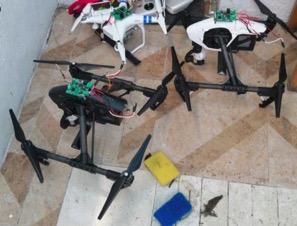
Image 1. Source: FGR México (@FGRMexico), Twitter. 3 May 2020,
https://twitter.com/FGRMexico/status/1257016365287911426/photo/1.

Image 2. Source: FGR México (@FGRMexico), Twitter. 3 May 2020,
https://twitter.com/FGRMexico/status/1257016365287911426/photo/2.
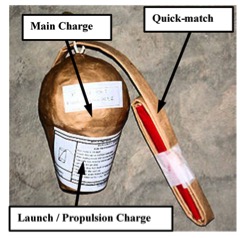
Image 2A – Professional 4-1/2-in. Mortar shell.
For Forensic Purposes. Source: David A. Kuhn.
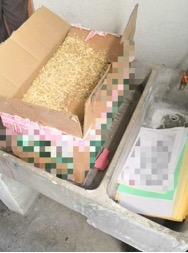
Image 3. Source: FGR México (@FGRMexico), Twitter. 3 May 2020,
https://twitter.com/FGRMexico/status/1257016365287911426/photo/3.
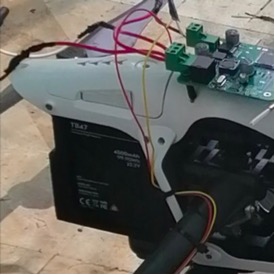
Image 4. Source: FGR México (@FGRMexico), Twitter. 3 May 2020,
https://twitter.com/FGRMexico/status/1257016365287911426/photo/4.
A basic analysis suggest the following elements of information can be obtained from this imagery:
Image 1: The two drones in the foreground are DJI Inspire 2 quadcopters, while the left rear quadcopter drone is a DJI Phantom 2. This is one of the earlier models in the DJI Phantom series. The Inspire 2 quadcopters, however, are current production models and a significant step-up in price than the Phantom series. The edges of two controllers can be seen in background at the top of the photo. A circuit board has been installed to the top of each drone with wires emanating from it along with an antenna.
The reader will note that all three drones in Image No. 1 are equipped with pylons (payload) that are mounted perpendicular to the axis of normal flight. Based upon the drone dimensions, these pylons are approximately 10-inches in length. Looking at the items seized, it appears that the pyrotechnic shells that are shown in Image No. 2 are the target payload that was destined to be carried by these drones.
Image 2: The items shown within the box in Image No. 2 are the top sections of five 4-inch professional fireworks mortar shells. These shells are designed to be launched from a ground mounted mortar tube and explode at an altitude from 250-ft. to slightly greater that 400-ft. above ground level in a colored star-burst pattern. The diameter of the star-burst of the 4-inch shell will be approximately 350-feet (106.6-meters).
Image 2A shows the full profile of a typical 4-in. fireworks shell. The truncated shape below the sphere houses a black powder charge that propels the shell from the mortar. It is likely that the operators would ultimately remove this charge completely as it would interfere with potential targeting. Attached to each of the five shells is a 3-ft. length of quick-match. While the quick-match is similar in appearance to a fuze, its burn rate is much faster. Normal fireworks time fuze burns at a general rate of .25 inches per second or 12 ft./ min. Quick-match, however, burns at a very fast rate of 120-inches per second (7,200-ft./sec.). This burn rate is designed to speed up ignition during professional fireworks displays while providing a safe firing distance to the operator igniting the guns (mortars).
Attached to each of the five shells is a 3-ft. length of quick-match. While the quick-match is similar in appearance to a fuze, its burn rate is much faster. Normal fireworks time fuze burns at a general rate of .25 inches per second or 12 ft./ min. Quick-match, however, burns at a very fast rate of 120-inches per second (7,200-ft./sec.). This burn rate is designed to speed up ignition during professional fireworks displays while providing a safe firing distance to the operator igniting the guns (mortars).
Image 3: The box that is shown in Image No. 3 appears to be a shipping container for pyrotechnics similar to those that are described above. Enhancement of the photograph revealed both English and Chinese characters printed on the packing/sealing tape. Some of the pixelated area of the photo are Customs declarations placards in addition to other shipping identification on the box. Enhanced photographic analysis of the type of cardboard used in the construction of the box itself indicates that it was produced in either China, Taiwan, or Korea. The wood shavings within the box are consistent with the type of packing that is normally used for professional fireworks shipments.
Image 4: The circuit board that has been used here is a stock circuit package that is normally used as an on-board command circuit for the operation of an individual quadcopter style drone. It appears that its configuration is in an auxiliary command circuit role to both deploy and potentially begin initiation of a payload; and will draw its operational power from the drone’s primary battery or from one of the two Ni-Cad. battery packs shown in the foreground of Image No. 1.
Since this circuit is originally designed to be encased, the power leads must be secured outside of the fuselage. The communication antenna is attached directly to the BNC, or similar type connector, on the board itself. The operational frequency of this auxiliary board will also be in the low gigahertz range. One inherent weakness of this type of configuration is that it must stay dry. Any moisture, including very light rain, would result in a malfunction.
Analysis
It appears in all respects that these three drones, as configured with the auxiliary C2 circuits and the attached pylons, were in the process of being set up to drop one or more of the 4-inch pyrotechnic shells on an unknown target. The process of configuring the drones for this type of operation requires fuzing, method of stores release (pylon), and command and control that will involve overlapping frequencies. In the case of frequency assignment, there are already two frequencies present in the operation of each drone. Command/control and video is transmitted over 2.4 GHz. There is additionally a 5.8 GHz ‘Bluetooth’ type link that is used to control the camera and gimble. The operator of these drones is now adding on an auxiliary C2 board that operates on an additional frequency, the bandwidth of which is likely to be quite close to the operational frequency of the drone that it is attached to.
Keeping the frequencies from interfering with one another is just part of the overall technical burden. Additionally, there is a CG (center of gravity) problem to solve in attaching more than one payload package to each drone. While the drone’s on-board microprocessor will be able to correct flight attitude for some level of CG anomalies, it cannot compensate for extreme disparity in CG within the central axis of the aircraft. There are additional technical issues that will not be addressed here due to security reasons.
The important takeaway, however, is that there are ways of overcoming all of these problems and it appears that the operators would not have equipped all three drones with auxiliary circuits and stores pylons were they not confident that they had solved the majority of them in a reliable manner.
All of the evidence present indicates that the designers/operators were planning to use these drones and their payload to communicate a threat to public officials (i.e., a politician, judge, prosecutor, or potentially even a member of law enforcement).
The preparation of three drones may have been completed for any of the following reasons:
- Preparing for a simultaneous attack on three separate targets.
- Preparing for an attack on a single target using more than one drone.
- An attack using more than one drone, but keeping one in reserve for backup.
If you consider that the visually spectacular starburst that one would observe at altitude during a professional fireworks display would now be going off at ground level, it would certainly get someone’s attention. While this payload is a pyrotechnic, it should not be taken lightly. Historically, professional fireworks shells such as these have maimed and killed a number of persons through a lack of respect and misuse.
A 4-inch shell detonating at ground level could be lethal at very close range and could also start fires if flammable material is present. Window glass could also be cracked and/or blown out from the concussion, depending upon the location of detonation.
All of the armed (payload carrying) cartel drones that have been observed previously in these regions were designed to land on, or near, a target and detonate. Hence, the drone has become an integral part of the guided weapon and will be ultimately be destroyed when detonation occurs. The designers of these modified drones appear to have devised a payload delivery system, which, while technically difficult, would spare the weaponized drone for reuse in a potential future attack.
Of increasing concern related to the above seizures is the recent collateral proliferation of weaponized drone use in Mexico as a new phenomena since November 2017—with two earlier incidents confirmed[4]—along with a resumption of car bombings taking place over the last year or so, albeit within geographically limited regions of the country.[5] As the Mexican crime wars and criminal insurgencies continue unabated—with record breaking homicide rates evident in 2019 and now into 2020, even in the midst of the COVID-19 pandemic[6]—the use of such ‘terrorist-like’ weaponry may further signify that a more sanguine phase of conflict has now been entered. Such potentials do not appear lost on Mexican federal officials. Their choice of the term ‘terrorist arsenal’ (arsenal terrorista) related to this incident may signify that the use of ‘narco terrorism’ (narcoterrorismo) narratives to describe what is taking place is no longer as politically unacceptable as it once was.[7]
Sources
Rubén Mosso, “FGR asegura explosivos y drones en Puebla; investiga terrorismo.” Milenio. 3 May 2020, https://www.milenio.com/policia/inicia-fgr-pesquisa-delito-finalidad-cometer-terrorismo.
Rubén Mosso, “Indaga FGR terrorismo tras hallar C4 en Puebla.” Milenio. 4 May 2020, https://www.milenio.com/policia/inicia-fgr-pesquisa-delito-finalidad-cometer-terrorismo.
“Aseguran en Puebla drones y explosivos para realizar actos terroristas.” Telefono Rojo. 3 May 2020, https://telefonorojo.mx/aseguran-en-puebla-drones-y-explosivos-para-realizar-actos-terroristas/.
Edmundo Velázquez, “FGR investiga si el Cártel de Santa Rosa de Lima maquilaba artefactos explosivos en San Pedro Cholula.” Periodico Central. 1 May 2020, https://www.periodicocentral.mx/2020/pagina-negra/delincuencia/item/9079-fgr-investiga-si-el-cartel-de-santa-rosa-de-lima-maquilaba-artefactos-explosivos-en-san-pedro-cholula.
“FGR secures bombs and drones for terrorism, in Cholula.” EN24. 4 May 2020, https://en24.news/en/2020/05/fgr-secures-bombs-and-drones-for-terrorism-in-cholulahtml.
End Notes
[1] Alma Keshavarz and Robert J. Bunker, “Mexico: Another Car Bomb Explosion Near National Guard in Celaya, Guanajuato.” OE Watch. May 2020: 89 and Alma Keshavarz and Robert J. Bunker, “Car Bomb Explodes Outside National Guard Headquarters in Celaya, Guanajuato.” OE Watch. April 2020: 77. See also Robert J. Bunker, David A. Kuhn and John P. Sullivan, “Mexican Cartel Tactical Note #42: Car Bomb in Apaseo el Alto, Guanajuato with Remote Detonation IED (‘Papa Bomba’) Payload.” Small Wars Journal. 7 January 2020, https://smallwarsjournal.com/jrnl/art/mexican-cartel-tactical-note-42-car-bomb-apaseo-el-alto-guanajuato-remote-detonation-ied.
[2] Rubén Mosso, “FGR asegura explosivos y drones en Puebla; investiga terrorismo.” Milenio. 3 May 2020, https://www.milenio.com/policia/inicia-fgr-pesquisa-delito-finalidad-cometer-terrorismo. Another source also ties the C4 explosives recovered to a 7 April Celaya car bomb detonated by a bridge. See Edmundo Velázquez, “FGR investiga si el Cártel de Santa Rosa de Lima maquilaba artefactos explosivos en San Pedro Cholula.” Periodico Central. 1 My 2020, https://www.periodicocentral.mx/2020/pagina-negra/delincuencia/item/9079-fgr-investiga-si-el-cartel-de-santa-rosa-de-lima-maquilaba-artefactos-explosivos-en-san-pedro-cholula.
[3] No imagery or further mention of the C4 explosives recovered in the raid have been released by the Fiscalía General de la República (FGR) linking the Cártel de Santa Rosa de Lima (CSRL) to the March and April 2020 Celaya, Guanajuato bombing incidents. It is assumed this is for operational security reasons to protect ongoing investigations and to protect FGR intelligence and forensics tradecraft.
[4] Robert J. Bunker and John P. Sullivan, “Mexican Cartel Tactical Note #35: Weaponized Drone/UAV/UAS Seized in Valtierrilla, Guanajuato with Remote Detonation IED (‘Papa Bomba’) Payload.” Small Wars Journal. 23 November 2017, https://smallwarsjournal.com/jrnl/art/mexican-cartel-tactical-note-35 and John P. Sullivan, Robert J. Bunker and David A. Kuhn, “Mexican Cartel Tactical Note #38: Armed Drone Targets the Baja California Public Safety Secretary’s Residence in Tecate, Mexico.” Small Wars Journal. 6 August 2018, https://smallwarsjournal.com/jrnl/art/mexican-cartel-tactical-note-38-armed-drone-targets-baja-california-public-safety.
[5] For car bombing context and past patterns of use, see Robert J. Bunker and John P. Sullivan, Cartel Car Bombings in Mexico. The Letort Papers. Carlisle, PA: US Army War College, Strategic Studies Institute. 16 August 2013, https://scholarship.claremont.edu/cgu_fac_pub/329/. For recent patterns of use, see Robert J. Bunker, David A. Kuhn and John P. Sullivan, “Mexican Cartel Tactical Note #42: Car Bomb in Apaseo el Alto, Guanajuato with Remote Detonation IED (‘Papa Bomba’) Payload.” In Note 1.
[6] “Mexico set another record for homicides in 2019.” Business Insider. 23 January 2020, https://www.businessinsider.com/mexico-set-another-record-for-homicides-in-2019-2020-1 and David Agren, “Mexico murder rate reaches new high as violence rages amid Covid-19 spread.” The Guardian. 3 April 2020, https://www.theguardian.com/world/2020/apr/03/mexico-murder-rate-homicide-coronavirus-covid-19.
[7] See the following FGR press release on the investigation by the FGR special prosecutor for organized crime, Subprocuraduría Especializada en Investigación de Delincuencia Organizada (SEIDO) for an illustration of the use of ‘terrorism’ to describe criminal cartel and gang activity. “Comunicado FGR 130/20. La FGR aseguró explosivos mediante cateo en Puebla y continúa con la investigación.” Fiscalía General de la República (FGR). Press Release. 3 May 2020, https://www.gob.mx/fgr/prensa/comunicado-fgr-130-20-la-fgr-aseguro-explosivos-mediante-cateo-en-puebla-y-continua-con-la-investigacion?idiom=es.
Significance: Cártel de Santa Rosa de Lima (CSRL), Cartel Technology, Drones, Improvised Explosive Device (IED), Tactics, Techniques, and Procedures (TTPs), Weaponized Drone, Weaponized Unmanned Aerial System (UAS)
Additional Reading
Robert J. Bunker, David A. Kuhn and John P. Sullivan, “Mexican Cartel Tactical Note #42: Car Bomb in Apaseo el Alto, Guanajuato with Remote Detonation IED (‘Papa Bomba’) Payload.” Small Wars Journal. 7 January 2020.
John P. Sullivan, Robert J. Bunker and David A. Kuhn, “Mexican Cartel Tactical Note #38: Armed Drone Targets the Baja California Public Safety Secretary’s Residence in Tecate, Mexico.” Small Wars Journal. 6 August 2018.
Robert J. Bunker and John P. Sullivan, “Mexican Cartel Tactical Note #35: Weaponized Drone/UAV/UAS Seized in Valtierrilla, Guanajuato with Remote Detonation IED (‘Papa Bomba’) Payload.” Small Wars Journal. 23 November 2017.
John P. Sullivan and Robert J. Bunker, “Mexican Cartel Strategic Note No. 18: Narcodrones on the Border and Beyond.” Small Wars Journal. 28 March 2016,
Robert J. Bunker, “Mexican Cartel Tactical Note #21: Cartel Unmanned Aerial Vehicles (UAVs).” Small Wars Journal. 1 August 2014.
About the Author(s)
Comments
We are committed to…
We are committed to providing our clients with exceptional solutions while offering web design and development services, graphic design services, organic SEO services, social media services, digital marketing services, server management services and Graphic Design Company in USA.


